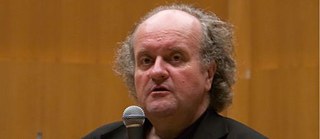Music Telecast
Digital Concert Hall

Berliner Philharmoniker
Sir Simon Rattle conducts Patricia Kopatchinskaja and Camilla Tilling
Wolfgang Rihm
Gruß-Moment 2 commissioned by the Berliner Philharmoniker Foundation Première (00:11:01)
György Ligeti
Violin Concerto (00:38:55)
Patricia Kopatchinskaja Violin
Gustav Mahler
Symphony No. 4 in G major (01:06:32)
Camilla Tilling Soprano
“György Ligeti’s violin concerto,” professes Patricia Kopatchinskaja, “is perhaps the most exciting violin concerto since Beethoven. It’s the concerto I most enjoy playing.” There’s no doubt about it: Ligeti’s concerto, which the Moldavian-Austrian violinist will present conducted by Sir Simon Rattle in Berlin’s Philharmonic Hall, is an exceptional work: “The instruments used range from … old ocarinas to an Asian lotus flute to the modern orchestra instruments with a lot of percussion. The composed material borrows from the medieval Notre Dame school, Renaissance and Baroque music, Javanese harmonies and Hungarian and Bulgarian folk music. … The solo violin part is composed in an extremely virtuosic style, but actually in many places the orchestral parts are no less virtuosic than the solo violin. The whole thing is a complicated … puzzle that as a whole creates a highly colourful, simultaneously strange and yet familiar, sometimes flickering and sometimes floating auditory impression” (Patricia Kopatchinskaja).
The evening kicks off with a new piece by Wolfgang Rihm composed in the context of the Philharmonic “Tapas” series of short commissioned works, in which composers can (and should) draw on a cornucopia of sounds. The evening’s main symphonic work is Gustav Mahler’s Fourth Symphony, which in the composer’s words begins as if the music “couldn’t count to three, but then launches out into the full multiplication table”. In the eerie Scherzo, “Friend Hain strikes up the music”: “Death,” said Bruno Walter, “fiddles rather strangely; his playing sends us up to heaven.” After the “reposeful” Adagio, in which the broadly flowing song of the low strings gradually conquers the entire tonal space, there follows the final paradise vision of the orchestral song (the Swedish soprano Camilla Tilling will sing the soprano role), which towards the end gets ever softer and slower until the music – in stark contrast to the sung text about “joyful awakening” – fades away “morendo” in a low register. Adorno appropriately called the work an “as if from the first to the last note”. It is precisely this chimerical quality that gave the work the lucid character that Mahler had in mind from the start: in the symphony “the greatest mobility of rhythms and harmony prevails – and what polyphony! – … Indeed, the thousands of little stones that make up the painting often change like a kaleidoscope, so that we are not able to recognize it.”
Details
Goethe-Institut / Max Mueller Bhavan Kolkata
Park Mansions, Gate 4
57A, Park Street
700 016 Kolkata